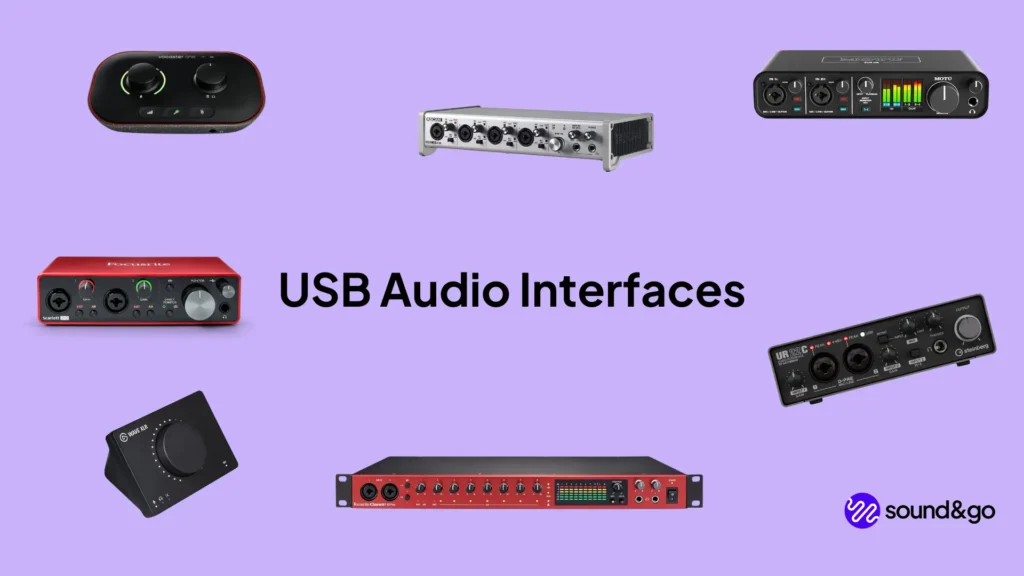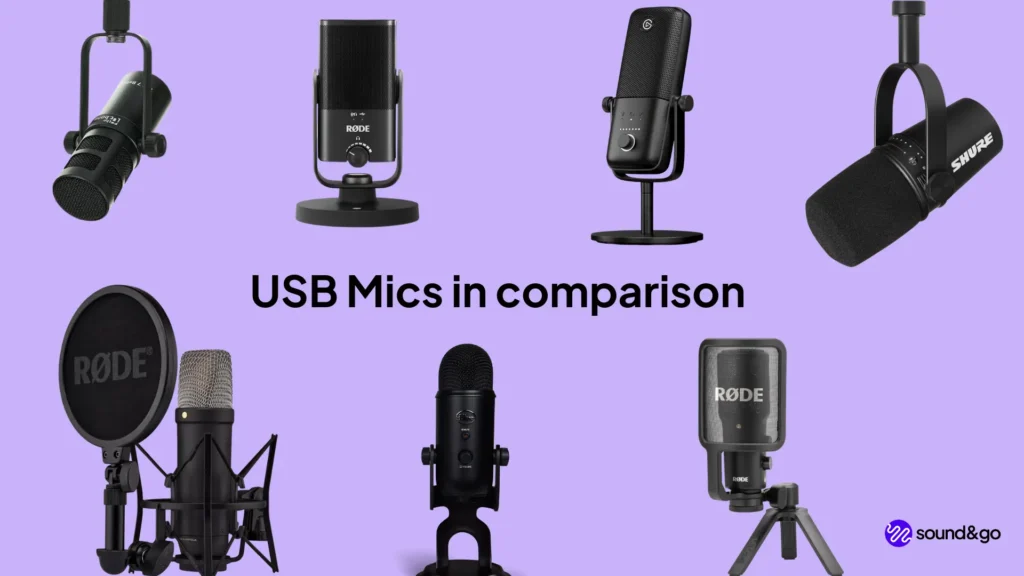The best studio headphones - Studio headphones in comparison - closed or open studio headphones?
High-quality studio headphones make your work much easier, whether you’re mixing or recording. We introduce you to the best models.
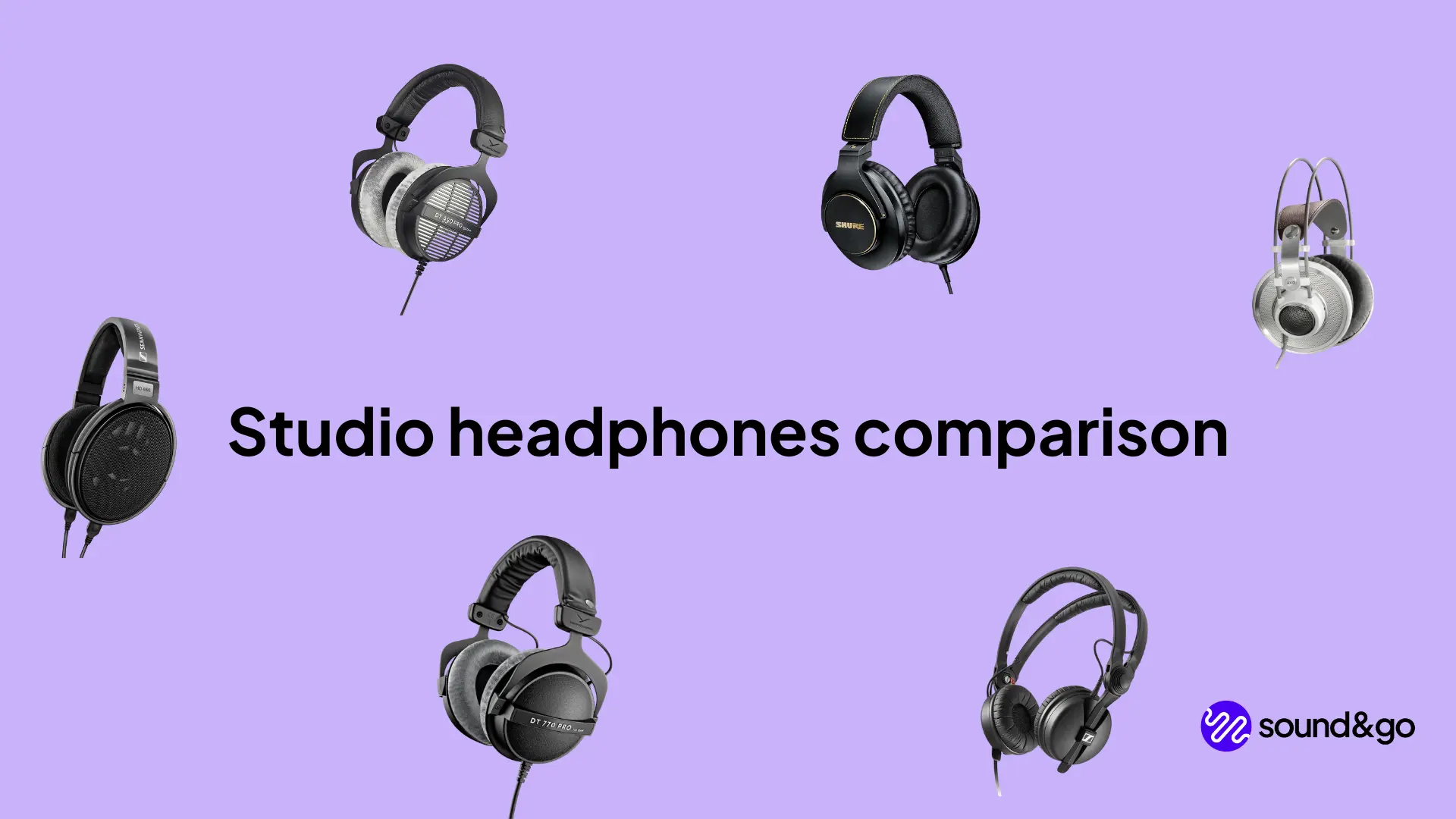
TL;DR: Our Favorites
- Use our affiliate links and support our work.
Our website is free of advertising banners and we state transparently when we have been sent a product. By purchasing from our affiliate partners you do not pay more and support us. Thank you!
Open or closed? Why it makes a difference!

Studio headphones are explicitly used in a studio environment, that’s clear. But what this studio use looks like for you always depends on how you work. Basically, if you record a lot with headphones, you should definitely buy closed studio headphones! This will prevent bleeding. Bleeding occurs when the ear cup is not well shielded. The microphone then not only picks up the vocals, for example, but also the playback from the headphones. The recording of the voice is therefore cleaner with a closed design.
However, open headphones are used by mixing or mastering engineers, for example. These are not shielded as well, so a lot of sound escapes to the outside. This can be perceived as disturbing in a public environment. However, the advantage for you as a user is that it sounds much more natural when you wear it for hours on end, as the environment is not completely shielded. What you hear therefore seems more natural and offers you a better perception of spatiality.
Closed headphones for monitoring and recording - Open headphones for mixing and mastering
So what are semi-open models? They combine natural sound with slightly shielded headphones. They are therefore an intermediate solution, but we don’t necessarily recommend them. The semi-open design is relatively rare anyway.
The best headphones for your studio (closed)
Our recommendation: Beyerdynamic DT 770 Pro / DT700 Pro X
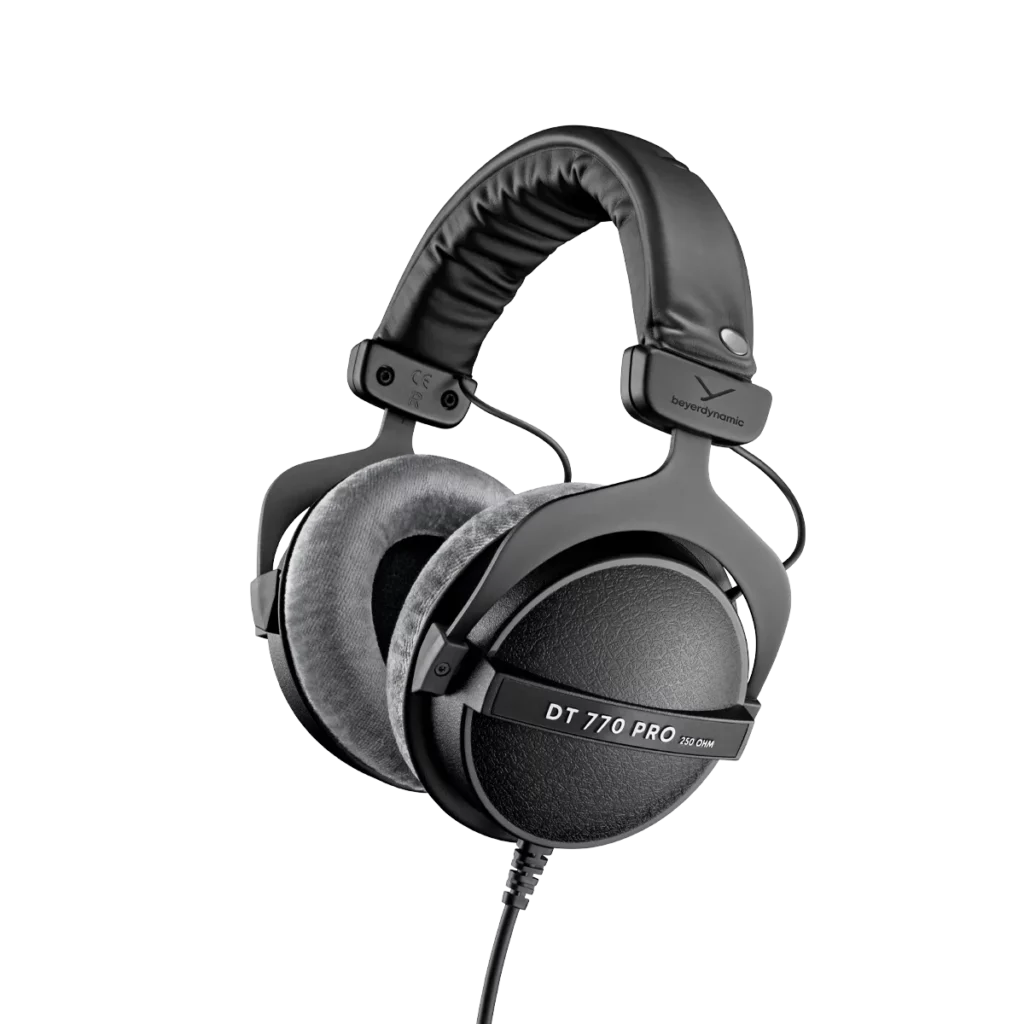
The Beyerdynamic DT 770 Pro has become an integral part of studios around the world and is now familiar to every producer. These closed-back headphones are perfect for recording, but are just as suitable for any other audio work.
The removable and replaceable ear pads are an important feature. After all, a lot of dirt collects here over the years and with new pads it almost feels like a new purchase.
The new revision of this model is the DT700 Pro X – the novelty now is that the new stellar.45 driver means that no further amplification is required and the beautiful sound quality of these studio headphones can also be used with smaller devices such as smartphones without any problems. The wearing comfort has also changed, with the successor fitting a little tighter around the head. This revision is offered at a price of approx. 200€, like the previous model.
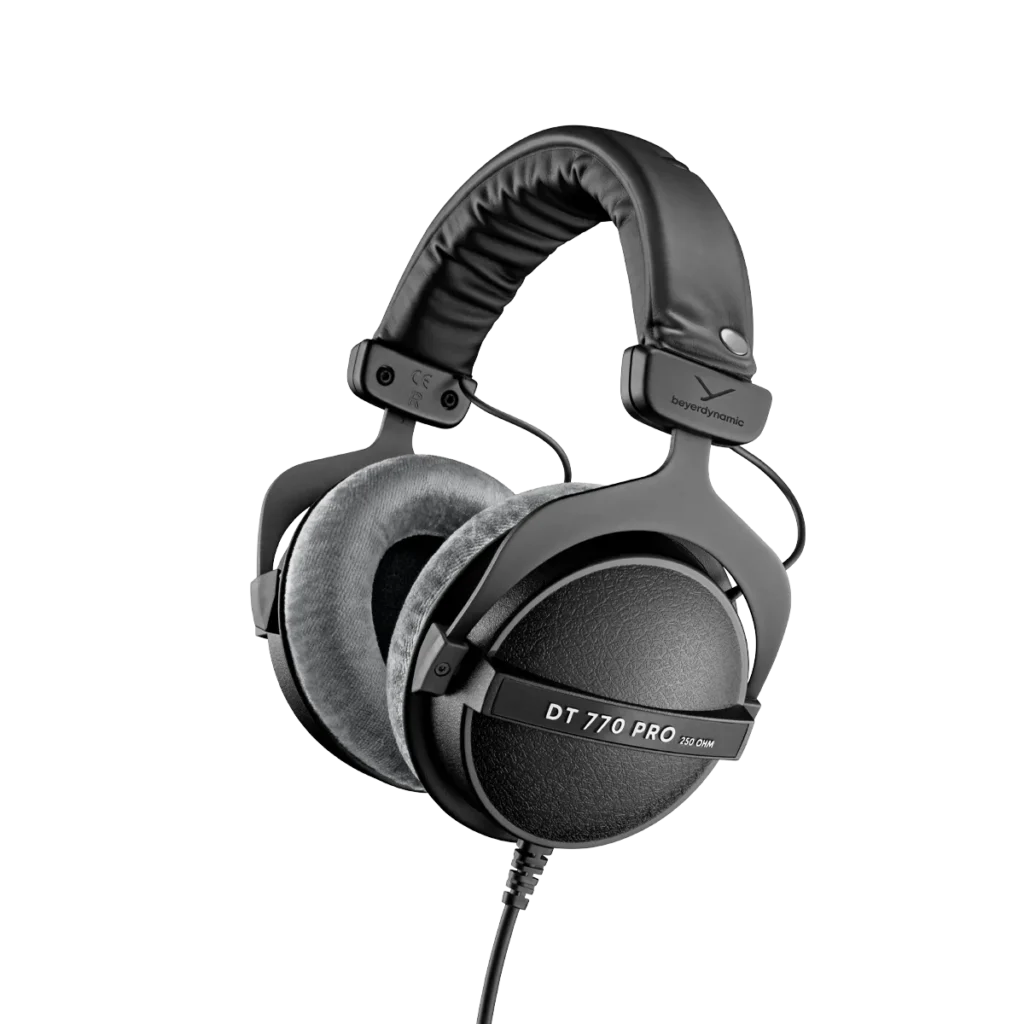
Shure SRH840A
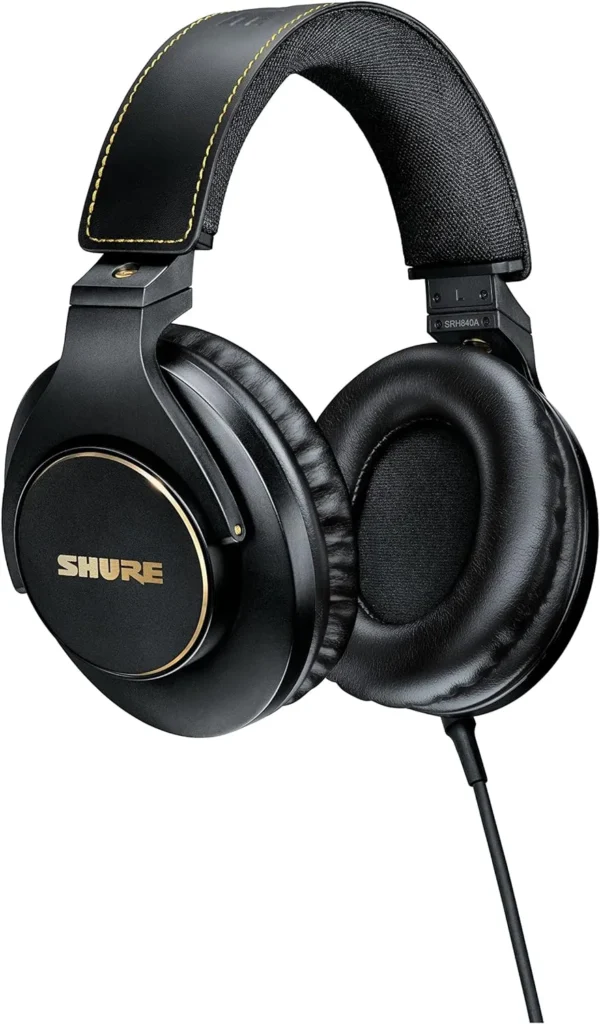
Shure is better known for microphones, but with its SRH series, Shure also offers studio headphones. The 840 has a fuller bass and extended frequency response compared to the SRH440. The wider, padded headband also increases comfort during long periods of listening, making this model ideal for professional monitoring and mixing.
Thanks to its robust construction, the Shure SRH840A is particularly durable and is also suitable for mobile use. Its closed design minimizes ambient noise and enables precise work even in noisy environments. With a price of around €150, it offers excellent value for money for users who value detailed and balanced sound. The headphones are particularly impressive in the mid-range with their clarity, making them ideal for vocal and instrument processing. The replaceable ear pads also ensure a long service life and additional flexibility.

Sennheiser HD 25 (not recommended)
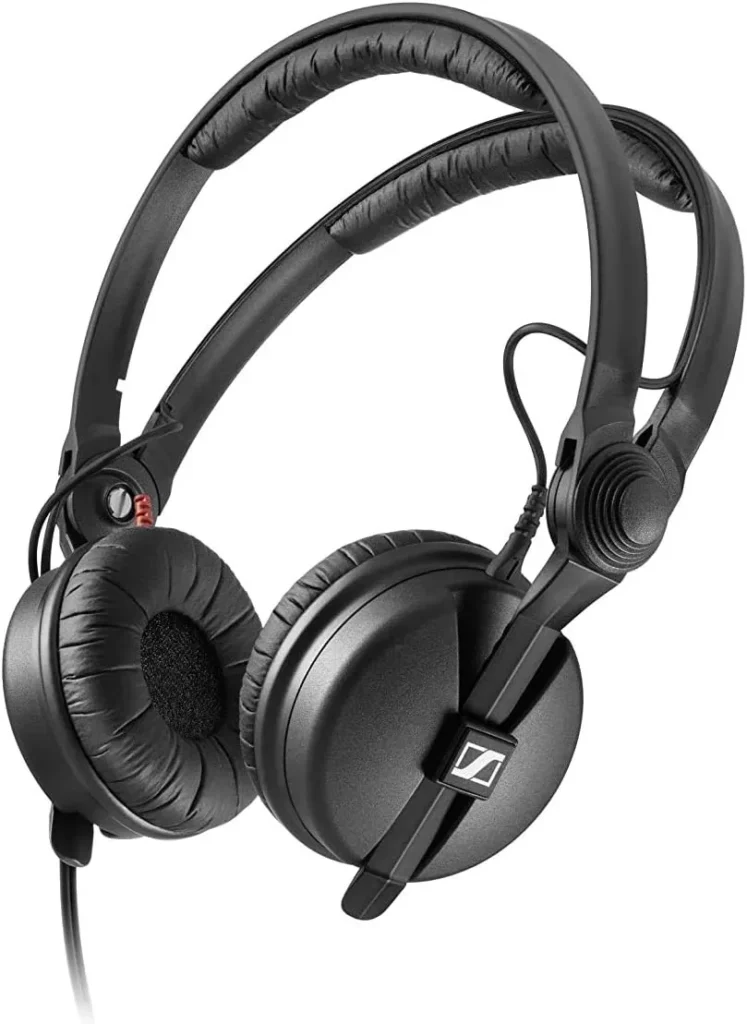
The Sennheiser HD25 is primarily designed for one target group: DJs. The design is lightweight and flexible (because they can be folded away), making them perfect for the constantly traveling DJ. The cushions lie on top of the ear cups, which greatly reduces wearing comfort and makes continuous use over several hours almost painful. As the cables are exposed, they can quickly become damaged and have to be replaced.
In terms of sound, however, the lightweight model surprises with its powerful bass: the technical data states that the HD25 can reproduce up to 16 Hz in the bass range, which is already very powerful for the size of the transducers.
The Sennheiser HD25 is fully designed for a specific use case. We would definitely not recommend these headphones for mixing and mastering.

Audio Technica ATH-M20x
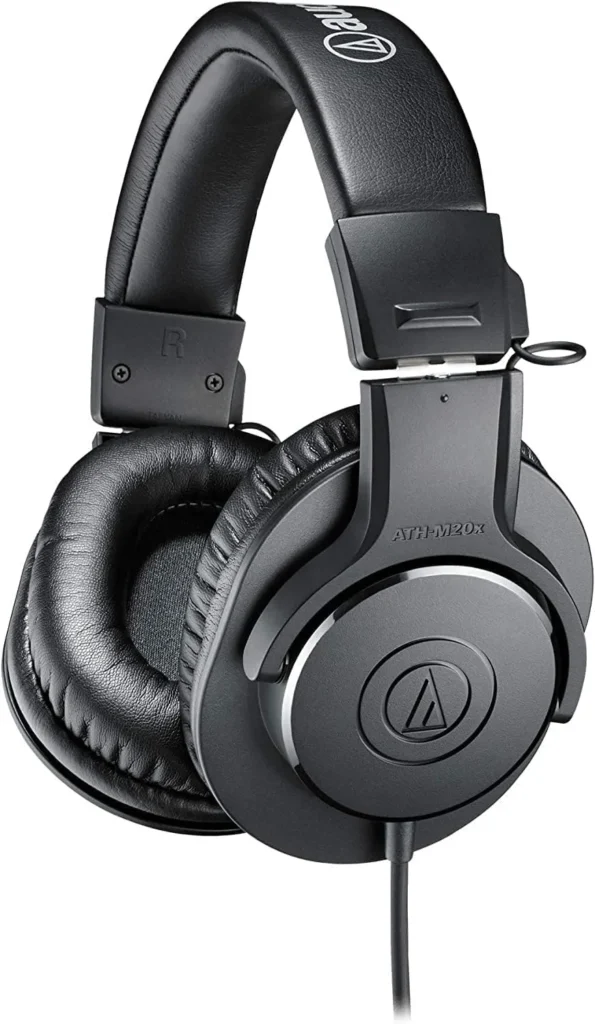
We have not mentioned a specific model here because Audio Technica has the M series for studio use. These include the ATH M20x, M30x, M40x, M50x, M60x and M70x models. All of these models are dynamic, closed studio headphones that are suitable for recording, mixing and DJ performances. The numbers do not stand for anything specific, but indicate the quality and price gradation. The M20x and M30x, for example, have a fixed cable, while the cable on the 40 and 50 can be replaced.
The ATH m50x is often compared to the Beyerdynamic DT-770. This is probably because both models are very popular and are in a similar price range. However, we would like to mention that the two are VERY different. Audio Technica has a very clear idea of what constitutes a good timbre for them. The detailed treble in particular is their trademark. In terms of workmanship and comfort, we personally prefer the quality of Beyerdynamic. The materials here are of a higher quality and more comfortable.

AIAIAI TMA-2 Studio Wireless+
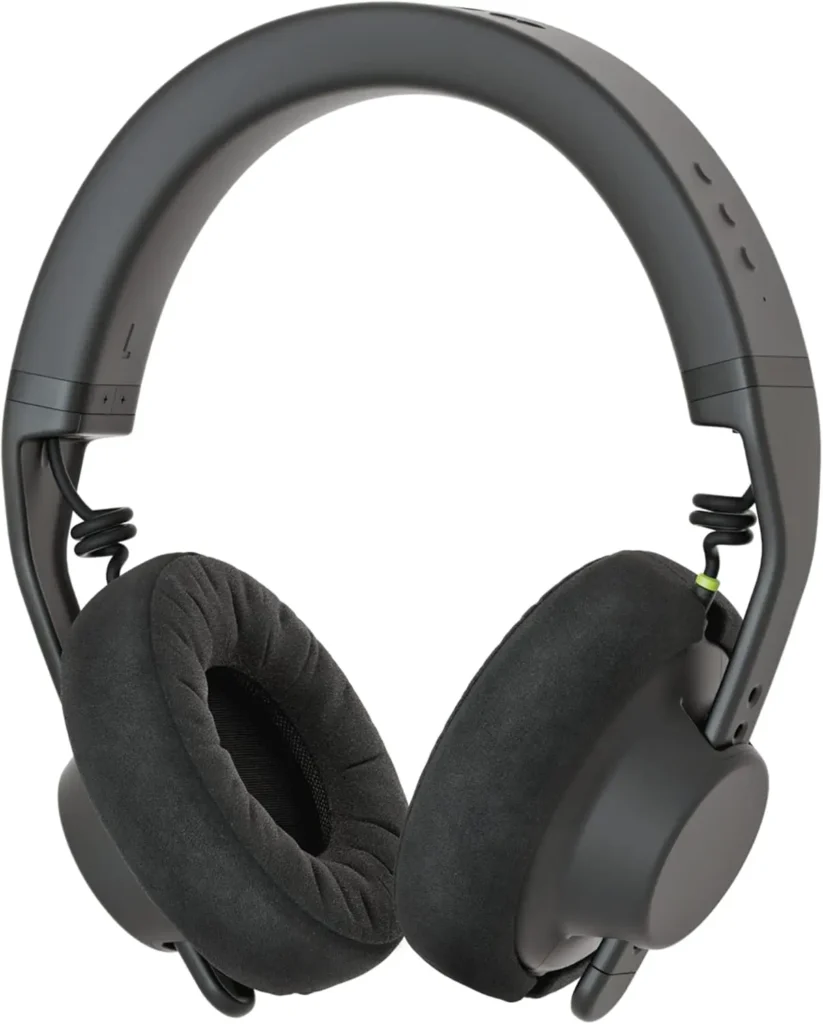
The AIAIAI is the only wireless headphone that we can recommend for studio use. It not only has Bluetooth transmission, but also W+ Link transmission, which shines with a high bit rate and constant, low latency.
So if you really want to work wirelessly, you can use these headphones. With 16ms latency, you won’t have any problems even when recording, unless you’re a drummer who plays with ms precision. The sound is relatively neutral, although not excellent, but you can definitely work with it. The wireless feature is definitely the main selling point.

The best headphones for your studio (open)
Beyerdynamic DT 990 Pro / DT990 Pro X
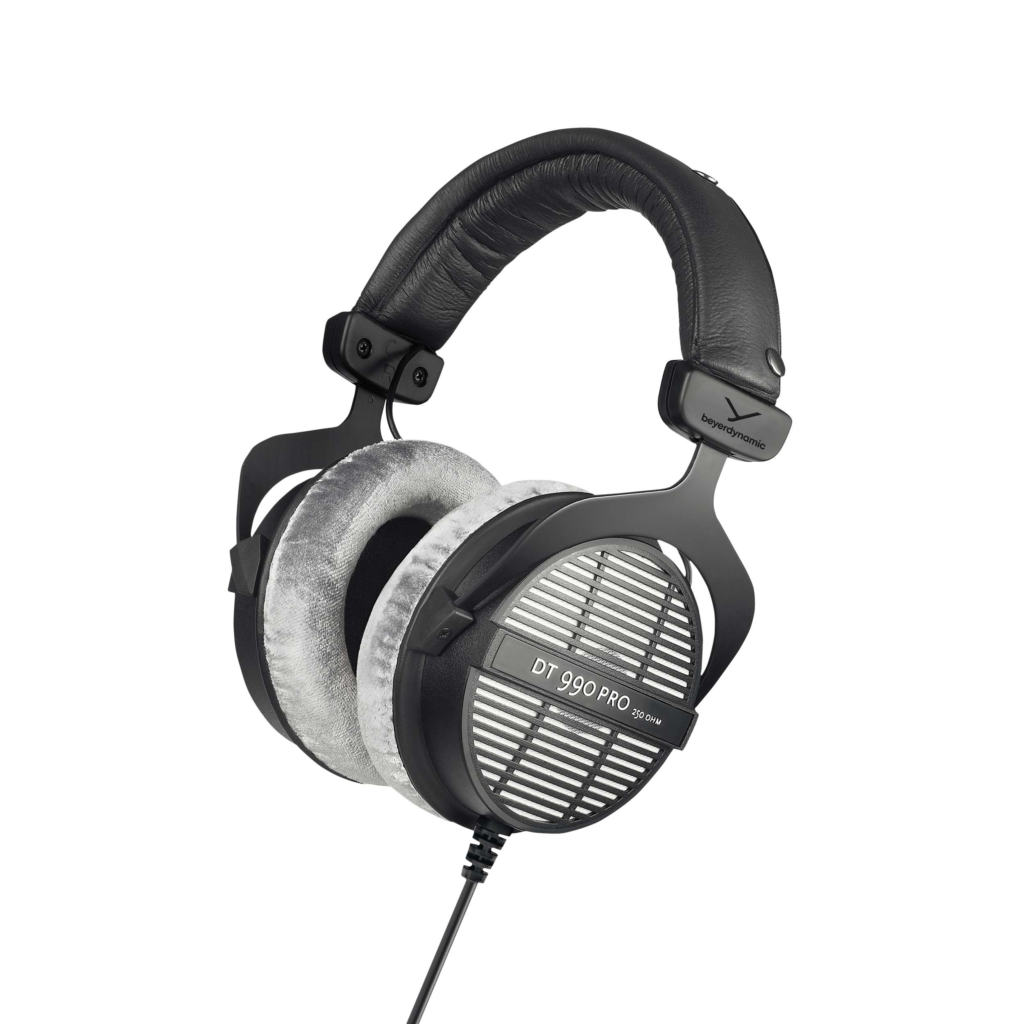
The DT990 from Beyerdynamic is probably the most popular open studio headphones, as its price-performance ratio is hard to beat. The sound is balanced, the workmanship is of high quality and they can be worn for a relatively long time.
As always with Beyerdynamic, this model is also available in 80 and 250 Ohm versions. However, the higher number not only means better quality from the driver, but also that the preamplifier has to generate a higher output level for the playback devices. An explanation of the impedance can be found below. Although these studio headphones leave nothing to be desired, there are two higher-quality variants that are also open studio headphones:
One is the DT900 Pro X, which is a revision of the classic and avoids the problem of impedances.
The DT1990 Pro is considerably more expensive but also of higher quality. A premium version, so to speak, which focuses on a natural stereo field. The dynamic Tesla neodymium driver makes these headphones special

AKG K701
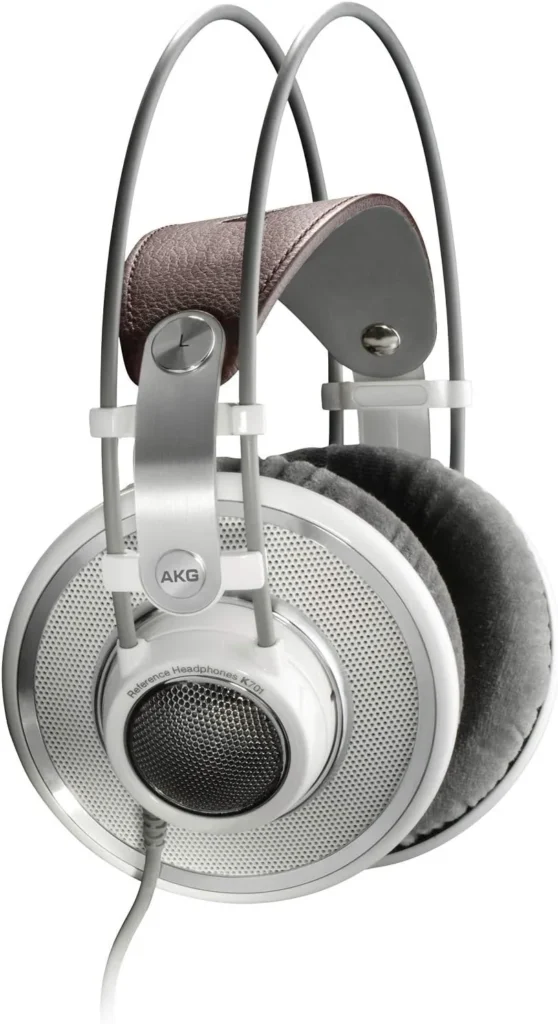
Another outstanding feature of the AKG K701 is its very wide and deep sound stage. The open design contributes to the fact that the music is well distributed spatially and offers an immersive listening experience.
The AKG K701 is relatively lightweight and has soft, velour-covered ear pads that offer good wearing comfort, even during longer listening sessions. The headphones have a self-adjusting headband that distributes pressure evenly.
The AKG K701 has a relatively high impedance and requires an amplifier to reach its full potential. It works with mobile devices, but a good amplifier is recommended to get the best possible sound quality.

Sennheiser HD650
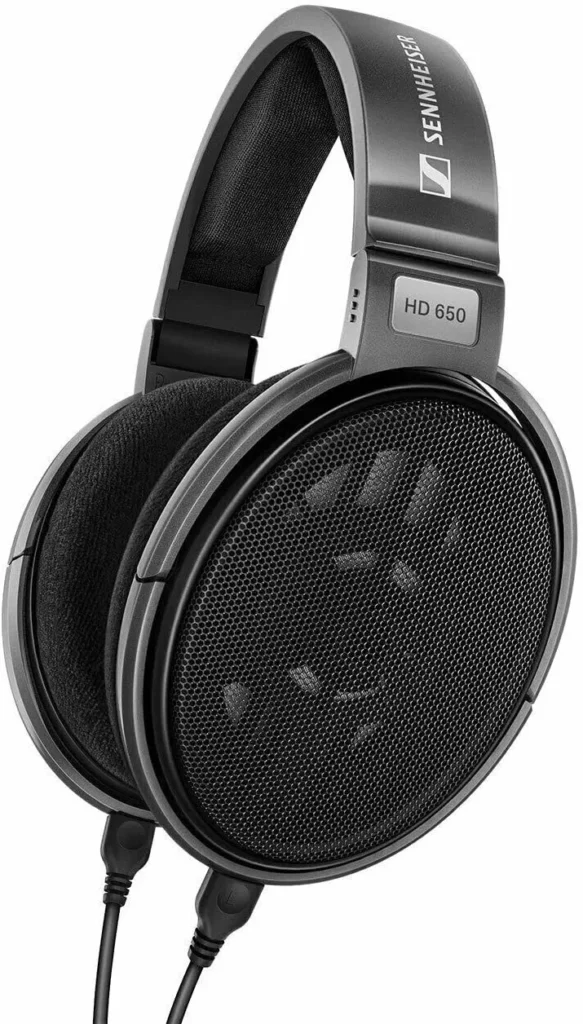
If you really want to hear and feel the advantage of open headphones, you should definitely try the Sennheiser HD650. An open, dynamic over-ear headphone known for its excellent sound quality, comfortable fit and durable construction. It is particularly popular with audiophiles and music lovers who value natural and neutral sound reproduction.
While most headphone ear cups are round, the HD650’s elliptical ear cup gives a completely different perspective on sound localization. In other words, sounds can be localized much better because the wide sound stage is reproduced very clearly and naturally.
Although the price here is a little higher, the HD650 is well worth trying out.

Professional studio headphones with high impedance - 25 or 250 ohms?
The topic of impedance is a very important one, because if you buy 250 Ohm headphones and only want to use them with your smartphone, the sound will be pretty quiet. Models with high values produce a balanced and better sound, but then you also need an audio interface with power to achieve a good volume.
Models with low values, on the other hand, can be used with any device, including small smartphones, and produce a relatively high sound pressure level.
For those interested, Beyerdynamic provides a full explanation here: What does the impedance mean?
Studio monitoring in the highest audio quality - comfort matters!
The quality of the audio signal completely fades into the background if the headphones don’t fit your ear cups. It’s not for nothing that there are so many different models from different suppliers. You should also pay attention to the comfort of your reference headphones, because if you can only wear them for 15 minutes while mixing because they are uncomfortable, then you have no advantage. Even if you want to buy high-quality gaming headphones, they should fit really well. There is often a 30-day return policy. So buy the model you like best and then decide (based on wearing comfort) whether you want to keep it.
In-ear headphones – an alternative to over-ear studio headphones?
In-ear headphones are very rarely seen in a professional studio. This is mainly due to the fact that this type of design is specially designed for very loud environments. This can be everyday noise on public transport or the volume level on live stages. The design, which practically sends the sound directly into the auditory canal, completely isolates you from your surroundings. Even better than closed headphones.
Due to their small and flexible shape and the aforementioned shielding, they are very suitable as monitoring headphones for musicians performing on stage.
This is why their frequency response is adapted to music and they do not sound as balanced as possible for different audio content. There are of course exceptions, such as x and y, which already approach a linear sound.
They are generally quite suitable for recordings in the recording room, as they do not radiate very much to the outside, similar to closed models. It is therefore not forbidden to use this type of headphones in your own four walls, although it is very rare for reasons of comfort and hygiene. They are also not suitable for mastering and editing
Bluetooth / Wireless or wired?

If the area of application is really the studio, then you are definitely better off with a wired version. Some manufacturers also have really high-quality wireless headphones, such as Austrian Audio, which offers the Hi-X25BT, but without a cable you always have latency and a slight loss of quality. Bluetooth headphones are actually more suitable for the consumer sector. So if you only want to enjoy music, you won’t go wrong with wireless models.
If you want to use wireless without latency, you can rely on the AIAIAI TMA-2 Wireless +. Because here you don’t get a fluctuating Bluetooth latency of approx. 250ms, but a constant latency of 16ms, which is hardly noticeable. Drummers should probably go for wired headphones after all. However, a good solution if you are annoyed by cables.
Conclusion: The best studio headphones are the ones that fit you
Above all, comfort and the ear cup are absolutely crucial for professional studio headphones, because you should be able to wear your new work device for several hours without any problems. Most over-ear models are particularly advanced in terms of wearing comfort in the professional sector.
Links marked with * are affiliate links. There are no additional costs for you, some of these links are with an automatic discount for you. We mark these links for transparency and would never recommend bad products. Find out more here: Our partners.

